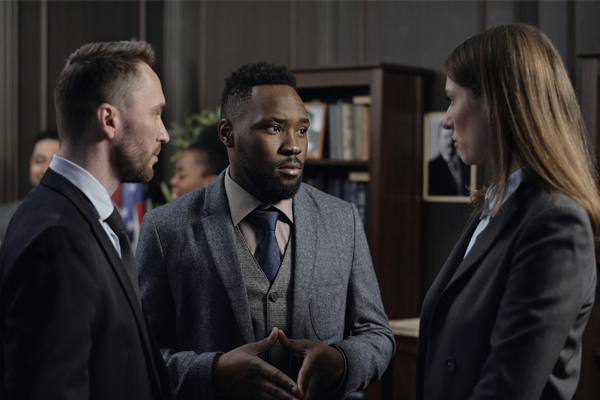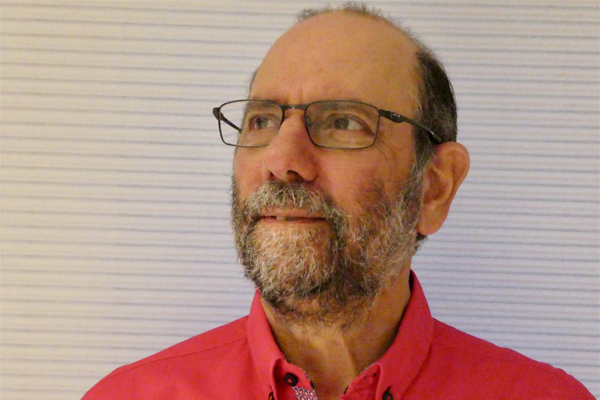In this week’s guest column, diversity and inclusion expert Colin Heyman explores how leaders and managers in organisations can start to address race inequality in the workplace.
The resurgence of the Black Lives Matter movement after the murder of George Floyd, has highlighted yet again the systemic inequality that disadvantages Black people, and has prompted many of us to reflect on what part we can play in change, both as individuals and through our organisations.
It is not an easy journey. After initial statements from organisations expressing support for Black Lives Matter, there has then been a big question: ‘what do we do next?’ Over the last few months, a way forward and some solutions are beginning to emerge.
WHERE TO START?
So, where to begin? Firstly, there is a need to review where you are as an organisation. This may start with numbers. What proportion of employees are people of colour or from ethnic minority backgrounds? How does this compare with the population in the areas from which you draw your employees? At what levels of the business are they in?
But the figures alone aren’t enough. It is important to find out why there are any shortfalls. I often say that “diversity and inclusion is played out in moment to moment relationships between people”. Changing policies and strategies, recruitment procedures and so on isn’t enough (although part of it is).

Just to give one example of this, I remember arriving at a venue with a Black female colleague. We were met by the White woman who ran the venue. She and my colleague started discussing our needs for the day, whilst I went to make a brief phone call. When I returned, the White woman turned away from my colleague and towards me. I assume that as the White man she subconsciously assumed that I was the important one! I turned back to my colleague to indicate that she was the decision maker. But if I had not realised what was going on, this could have been very excluding.
RACISM & MICRO-AGGRESSIONS
A recent survey reported in a housing magazine, showed that ‘the most commonly reported issue (within organisations) was racism’ and ‘that respondents did not usually experience racism as one isolated incident, but as a series of interactions, comments and micro aggressions that have affected them throughout their career’. This constant hum of racism is what causes the damage.
So, you can have the fairest promotion policy in the world, but it won’t make any difference if White managers are still giving the most important assignments to ‘trusted people’, who look like the manager; or if managers are unconsciously judging Black/Asian people on the team more harshly, and not valuing them or the difference they may bring. Nor will it if managers are not giving staff from ethnic backgrounds the feedback they give to White members of the team, for fear that those staff members will be offended, thus not giving them as much chance to develop. These are just a few examples of the obstacles to progress for Black, Asian and people from ethnic minority backgrounds.

CULTURE CHANGE
So, what you are talking about is a change to culture, to how people behave and what is acceptable, and how people are expected to be. It is in this respect similar to, say, a change to a more customer-oriented culture. So how can organisations begin to address such issues? I believe that it is crucial to take the following steps:
- First to understand what is going on at this micro level. You can only do this by asking people of colour in your organisation – and other people from underprivileged groups – about what they experience. How does the organisation feel to Asian, Black and staff from ethnic minority groups? What do they experience day to day? How would they like colleagues to be different with them? Of course, not everyone will give the same answer.
- Secondly, listen to what people then tell you. It’s easy to feel defensive if you are told your firm and its culture aren’t as welcoming, or free of discrimination as you had thought/hoped.
- Third, initiate discussions between people of colour and White people within the organisation. This isn’t an easy discussion or journey. Certain conditions must be established for them to be conducted successfully:
- Skilful facilitation, often by someone external to the organisation if those skills are not present in the organisation.
- Ground rules such as not blaming, listening with respect, rules about giving and receiving feedback.
- Fourth, from these discussions, it can be possible to plan a way forward, with actions for both the organisation and individuals. It is of course vital to act on the plan, monitor the results and review progress.

RECOMMENDED ACTIONS
What next? The important thing is that there is a next, that the organisation is able to move to action and commit to it. Here are just a few of the many initiatives that can move things forward:
Leadership
Leadership from senior people is of course crucial in this. Often this necessitates breaking down what inclusive leadership looks like, into specific behaviours. It is crucial that leaders don’t just talk the talk, but that their behaviour models inclusive leadership. They may get it wrong sometimes. But owning up to it and taking responsibility for their learning is part of modelling inclusive leadership.
Champions groups
Champion groups composed of both White people and staff with ethnic minority backgrounds who are race equality allies from across the company, can be very effective in keeping the issue live within each team throughout the organisation. They can also ensure that racism and other diversity and inclusion issues are mainstreamed into everything the organisation does.
Mentoring
You may wish to introduce a two-way mentoring scheme. This is where a senior manager will mentor a person with an ethnic background about how the organisation works and how to influence people within it; and the person of colour educates the senior manager about racism, bias and what it’s like to be a person of colour in the organisation.
A LONG JOURNEY
These aren’t prescriptions that will ‘solve’ racism. Every organisation needs to work out for itself what initiatives are needed. This work – and journey – isn’t necessarily easy. But in the long run it can make organisations both better places to work and more effective. It will also help to create a culture where everyone can be themselves at work.

AUTHOR BIOGRAPHY
Colin Heyman has been working in the field of leadership and diversity for over 20 year, as a consultant, trainer, facilitator and coach. His passion for leadership and diversity arises from both his own experience and from a firm belief that improving people’s leadership and diversity practice are vital to improving our world.







































